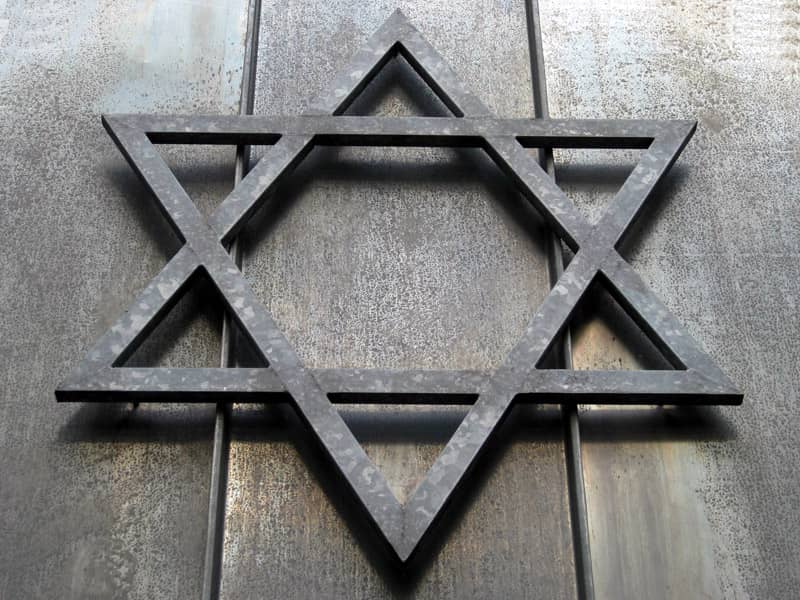One facet of my embrace of Jewish life centers around deepening my relationship with Torah. I've tried to do this in a variety of ways: study, both in classes and with my rabbi; getting tutored in Hebrew; writing divrei Torah (commentaries on the Torah portion) for my shul newsletter; and, most recently, learning to chant Torah during the synagogue service (called leyning in Yiddish).
Chanting Torah is a challenge for me in several ways. First, I am shy. I find it tremendously difficult to be the center of attention and keep my cool. Second, I know almost no Hebrew. Third, I am terrified of religious ceremony-the awesomeness just about shuts me down. Add to all this the newness of my Jewishness, and you'll understand how formidable it feels to take on the most fundamental and emblematic means of public Jewish religious practice: singing the Torah for assembled Jews.
In a word, I am plotzing.
I decided to learn leyning this summer, when I first heard the man who would become my teacher, Kenneth Cohen, chant. It took my breath away. Not only does he have a beautiful voice, but he sang with such conviction; hearing him, I knew I wanted something he had. I wanted to be expressive about Torah in just exactly that gorgeous way. For me, the beauty of Judaism comes from the freedom to be fully expressive about God (among other things). And singing, making an instrument of your body, is as expressive as it gets.
Luckily, I have many things going for me that mitigate the fear factor: a warm and supportive shul community (including a group of regular chanters who are genuinely excited for me); a wonderful leyning teacher; and reserves of energy and enthusiasm that sometimes overpower the nerves and help me through theologically fearsome events.
Let me tell you more about why this task is so daunting.
It's imperative that the words of Torah be pronounced correctly. If the reader mispronounces something (and it is terrifyingly easy to do), people standing with her in front of the congregation will prompt her with the correct pronunciation. This isn't to shame or reprimand the reader; the only thing that matters is that it get said right.
Next, have you ever looked at a Torah scroll? It is a dense sea of Hebrew consonants. Think S, T, V, L, M, N, B . it just goes on and on, and nary a vowel in sight. Groupings like "KDS" could signify any number of words-depending on what vowels you apply, you could mispronounce it a handful of ways.
There is no punctuation. You don't realize how much you rely on punctuation or vowels until you don't have them. Try pronouncing this:
THR S N PNCTTN Y DNT RLZE HW MCH Y RLY N PNCTTN R VWLS NTL Y DNT HV THM
Now imagine these letters are all embellished with calligraphic curliques and flourishes, as they are in the scrolls. Now imagine yourself singing them. In Hebrew. In front of your rabbi and everybody in your congregation.
Did I mention I was plotzing?
The terrors, however, are offset by the loveliness of the chanting itself. The Torah has been set to music, called ta'amim or cantillations: a system of little melodies that a chanter uses to sing her way through the reading. (In Orthodox Judaism, women aren't allowed to chant Torah. Orthodox Judaism's loss, say I.) These melodies vary according to geography; the most common are Ashkenazic (the one my shul employs) and Sephardic Spanish-Portuguese (the one I am learning).
The musical system was invented to make the recitations easier. And it does. It is also mind-blowingly, earth-shatteringly beautiful. But by now you've probably figured out that if the vowels are not marked in the Torah scroll, the ta'amim aren't either. You have to memorize them.
Everything about this procedure goes against modern-day, Western behavior. It's like relearning how to breathe. I love it. It mortifies me. I love it.
So, wish me luck! My leyning debut is in March, the first anniversary of my becoming a Jew (the best damn decision I ever made). When I get up to the bimah, I will grasp the silver yad ("hand" in Hebrew; it's a pointer used to follow the text so you don't touch the Torah), take a deep breath, and start singing-a ritual Jews have been performing for 3,000 years. I will be giving my fellow Jews the Torah. The most exalting and humbling task in the universe.

